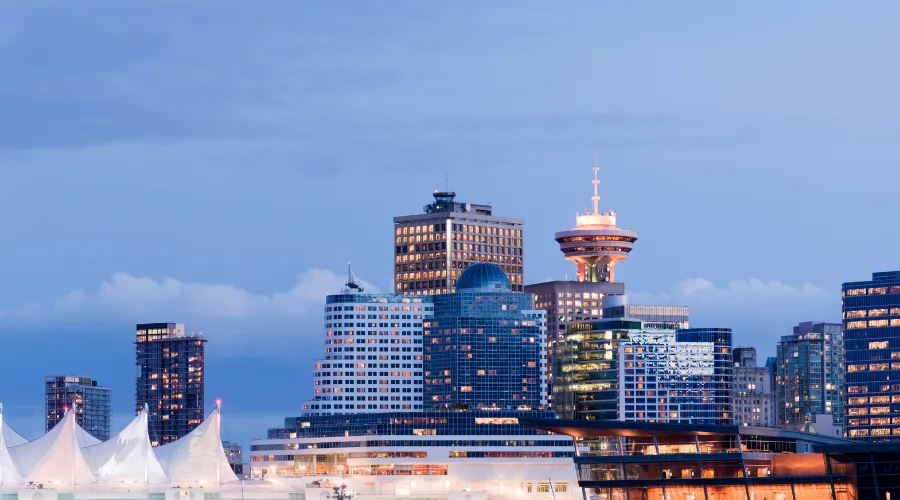The Pros and Cons of Living in Canada in 2025

Canada in 2025 beckons with promises of opportunity, natural splendor, and cultural vibrancy, but it’s not without its challenges.
Deciding to live in this vast, dynamic country requires weighing its unique advantages against its hurdles.
Picture Canada as a sprawling canvas—vivid with promise yet streaked with complexities that demand careful consideration.
This article dives deep into the pros and cons of living in Canada in 2025, offering a fresh perspective for those contemplating a move or simply curious about life in the Great White North.
From economic opportunities to cultural nuances, we’ll explore what makes Canada shine and where it might fall short, ensuring you have a clear picture to inform your decision.
In addition to its vast landscapes and urban centers, Canada boasts a rich history that influences its present.
Understanding the historical context can provide deeper insights into the cultural dynamics and societal values that shape life in Canada today.
A Welcoming Multicultural Mosaic
Canada’s cultural landscape is a vibrant tapestry, woven from threads of global traditions.
In 2025, cities like Toronto, Vancouver, and Montréal thrive as hubs of diversity, where over 20% of the population identifies as a visible minority, according to Statistics Canada.
This inclusivity fosters a sense of belonging, especially for newcomers.
Festivals like Toronto’s Caribana or Vancouver’s Lunar New Year celebrations bring communities together, creating spaces where cultural exchange is not just encouraged but celebrated.
Imagine strolling through Kensington Market, where the aroma of Jamaican patties mingles with the chatter of multilingual vendors—a microcosm of Canada’s open-hearted ethos.
For international students or immigrants, this diversity translates into opportunity.
Universities like the University of British Columbia offer robust support for international students, with programs like the Post-Graduation Work Permit (PGWP) allowing up to three years of work experience post-study.
This pathway to permanent residency is a beacon for those seeking stability.
Yet, the question lingers: can a nation so diverse truly feel like home for everyone?
The answer often depends on one’s willingness to embrace Canada’s multicultural ethos, but the door is wide open for those who do.
Moreover, the Canadian government actively promotes multiculturalism through various policies and initiatives, making it easier for newcomers to integrate.
This commitment to diversity not only enriches the cultural fabric of the nation but also strengthens its economy by attracting talent from around the world.
You can learn more about Canada’s multicultural policies on the official Government of Canada website.
Economic Stability with a Catch
Canada’s economy in 2025 remains a powerhouse, driven by sectors like technology, healthcare, and natural resources.
Cities like Toronto and Vancouver boast robust job markets, with average salaries in Vancouver hitting $68,255 annually, as noted in recent economic reports.
For professionals in tech or finance, urban centers offer competitive opportunities, with companies like Shopify and RBC expanding their footprint.
Take Priya, a software engineer who moved from Bangalore to Toronto in 2024.
She landed a role at a fintech startup, leveraging Canada’s welcoming immigration policies and thriving tech scene to build a new life.
However, economic prosperity comes with a steep price tag.
The cost of living, particularly in major cities, is a significant hurdle.
Housing affordability remains a crisis, with Vancouver’s average home price hovering around $1.2 million.
Renting isn’t much easier—expect to pay $2,500 monthly for a one-bedroom apartment in downtown Toronto.
This financial strain can feel like trying to climb a mountain with a backpack full of rocks.
While smaller cities like Halifax offer more affordable living, with monthly costs around $2,445, job opportunities there may not match the urban hubs.
Balancing career aspirations with affordability is a tightrope many Canadians walk daily.
Additionally, the economic landscape is constantly evolving, influenced by global market trends and domestic policies.
Staying informed about these changes is crucial for anyone considering a move to Canada, as it can impact job availability and living standards.
A Healthcare System That Cares—Mostly
Canada’s publicly funded healthcare system is a cornerstone of its appeal.
In 2025, residents enjoy access to essential medical services without the fear of crippling debt, a stark contrast to privatized systems elsewhere.
For example, a routine surgery like an appendectomy costs nothing out-of-pocket for residents, unlike in the U.S., where it might run $20,000.
This safety net is a lifeline for families like the Wongs, who relocated to Calgary from Hong Kong.
When their daughter needed emergency care, they were relieved to face no financial burden, allowing them to focus on her recovery.
Yet, the system isn’t flawless.
Wait times for non-emergency procedures can stretch months, and rural areas often lack specialists.
In Québec, language barriers can complicate access, as some clinics prioritize French-speaking patients.
International students in provinces like Ontario must purchase private insurance, adding to their expenses.
While the system’s foundation is strong, its cracks can frustrate those seeking timely care, making it a mixed blessing in the pros and cons of living in Canada in 2025.
Furthermore, the ongoing debate about healthcare funding and accessibility highlights the need for reforms to address these shortcomings.
Advocacy groups are pushing for changes to ensure that all Canadians receive the care they need, regardless of their location or language.

Nature’s Playground, Weather’s Challenge
Canada’s natural beauty is unrivaled, from Banff’s turquoise lakes to Nova Scotia’s rugged coastlines.
In 2025, outdoor enthusiasts find endless opportunities for hiking, skiing, or kayaking, with 13% of the country designated as protected parkland.
Urban dwellers benefit too—Vancouver’s Stanley Park or Toronto’s High Park offer green escapes within city limits.
For nature lovers, Canada is a paradise where every season paints a new masterpiece.
But the weather can be a formidable foe.
Winters in 2025 are harsh, with temperatures in Winnipeg dipping to -30°C.
Even milder cities like Vancouver face relentless rain, which can dampen spirits.
The cost of heating homes or buying winter gear adds up, and seasonal affective disorder (SAD) affects roughly 10% of Canadians during darker months.
Preparing for Canada’s climate is like gearing up for a marathon—endurance and the right equipment are essential.
Additionally, many Canadians embrace winter sports and activities, turning the cold months into a time of celebration and community.
Events like winter festivals and outdoor skating rinks help foster a sense of camaraderie among residents, making the most of the chilly weather.
+ 17,000 Manitobans Flee as Out-of-Control Wildfires Threaten Communities
Safety and Community: A Secure Embrace
Canada’s reputation for safety holds strong in 2025.
Cities like Toronto rank among the safest globally, with a crime rate of 2.9 incidents per 1,000 people, per Money.ca.
This security fosters tight-knit communities, where neighbors often become friends.
In smaller towns like Fredericton, community events like harvest festivals create a sense of belonging that’s hard to replicate in larger nations.
However, safety doesn’t mean invincibility.
Urban areas face rising concerns about petty crime, and rural regions sometimes lack adequate policing.
For immigrants, social integration can be a hurdle—language barriers or cultural differences may leave some feeling isolated.
While Canada’s embrace is warm, it requires effort to fully feel at home.
Moreover, community initiatives and local organizations play a crucial role in enhancing safety and fostering connections among residents.
Engagement in local activities can help newcomers build relationships and feel more integrated into their neighborhoods.

Education: A Global Draw with Costs
Canada’s education system is a magnet for students worldwide.
Universities like McGill and UBC rank among the top 50 globally, offering cutting-edge research opportunities.
The PGWP program enhances employability, making Canada a launchpad for careers.
Yet, international students face steep tuition fees—averaging $36,123 annually for undergraduates.
Coupled with high living costs, this can strain budgets.
For locals, public schools are top-tier, but private education or extracurriculars can be pricey.
Education is a golden ticket, but its cost can weigh heavily.
Additionally, the emphasis on research and innovation in Canadian universities attracts global talent, enriching the academic environment.
Scholarships and funding opportunities are available, helping to alleviate some financial burdens for deserving students.
++ The impact of artificial intelligence on news coverage and content curation
Immigration: Open Doors, Long Waits
Canada’s immigration policies remain welcoming in 2025, with pathways like Express Entry and business investment schemes attracting nearly 500,000 newcomers annually.
This openness fuels economic growth and cultural richness.
However, processing times for visas can stretch over a year, testing patience.
In Québec, French proficiency is often a prerequisite, adding complexity.
For those dreaming of a new start, Canada’s doors are open, but the paperwork can feel like a labyrinth.
Moreover, community support networks are essential for newcomers navigating the immigration process.
These networks often provide resources and guidance, helping immigrants acclimate to their new lives in Canada.
Cultural Nuances and Language Dynamics
Living in Canada means navigating a bilingual landscape.
English dominates in most provinces, but Québec’s French-centric culture is a vibrant force.
In 2025, bilingual job opportunities in Montréal are plentiful, but non-French speakers may struggle.
Cultural festivals, from Calgary’s Stampede to Québec City’s Winter Carnival, showcase Canada’s dual heritage.
Yet, for some, the language divide feels like a river to cross without a bridge.
Additionally, language learning resources and community classes are widely available, making it easier for newcomers to become proficient in both English and French.
This commitment to language education enhances inclusivity and fosters better communication among diverse populations.
Sustainability and Innovation
Canada leads in sustainability, with ambitious 2030 carbon reduction goals.
Cities like Vancouver integrate eco-friendly practices, from bike-sharing to green buildings.
Tech hubs drive innovation, with AI startups flourishing in Toronto.
However, rural areas lag in infrastructure, and high energy costs can burden households.
Canada’s green vision is bold, but its execution varies by region.
Furthermore, grassroots movements and local initiatives are emerging to promote sustainable living practices across the country.
These efforts empower communities to take action and contribute to Canada’s environmental goals.
The Verdict: Is Canada Right for You?
Weighing the pros and cons of living in Canada in 2025 reveals a nation of contrasts—opportunity paired with expense, beauty tempered by weather, inclusivity balanced by integration challenges.
It’s a land where dreams can take root, but not without effort.
For those willing to embrace its complexities, Canada offers a life rich in possibility.
So, what will you choose: the adventure of a new beginning or the comfort of the familiar?
Ultimately, the decision to move to Canada should be informed by a thorough understanding of both its advantages and challenges.
By considering personal priorities and circumstances, potential newcomers can make a choice that aligns with their aspirations and lifestyle.
